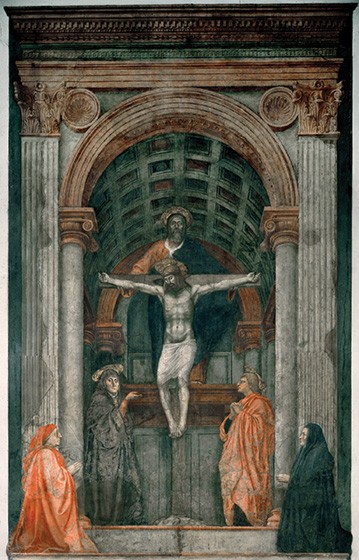Holy Trinity, by Masaccio (1401–1428)

Holy Trinity was executed around 1426–27 and is located in the Dominican church of Santa Maria Novella in Florence. The fresco was commissioned as a funerary monument by the Lenzi family, and two members of the family are depicted kneeling in prayer on either side of the cross, below Mary and the Beloved Disciple. The upper part of the fresco depicts God the Father supporting the arms of the crucified Son. Between the Father’s beard and Jesus’ head is the white, dovelike form of the Holy Spirit, uniting Father and Son. Masaccio is following a well-known artistic convention of associating the “throne of grace” (Heb. 4:16) with a crucifixion scene as a way of reflecting the profound mystery of the Trinity. While many detractors of Christianity have pointed to the crucifixion as evidence of the absurdity of the Trinity, Masaccio claims it is in this very same moment that the essential unity of Father, Son, and Holy Spirit is most clearly revealed. Here there is no depiction of God turning his back on his Son. Rather, here is a loving Father, who in the mystery of the Trinity is at one with the Son and the Spirit and suffers on the believer’s behalf.





